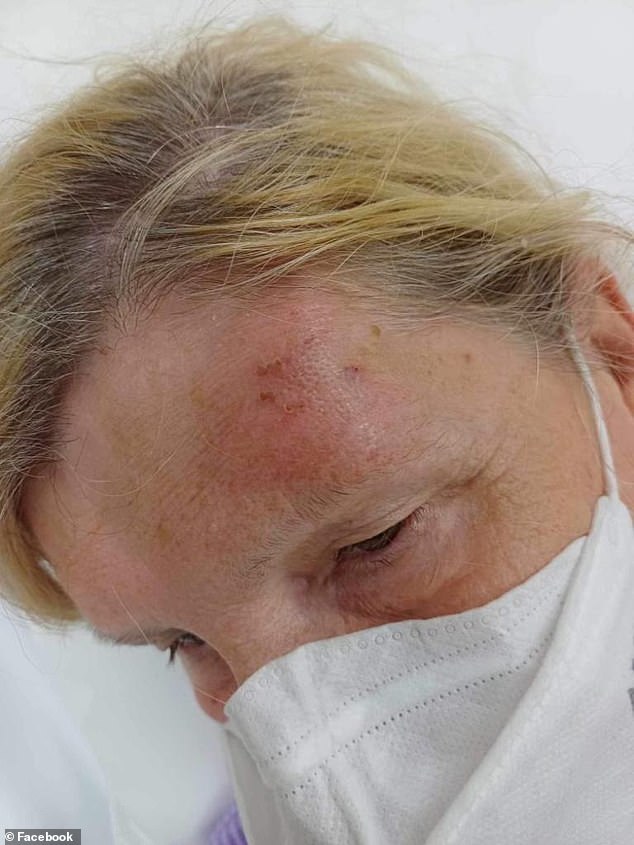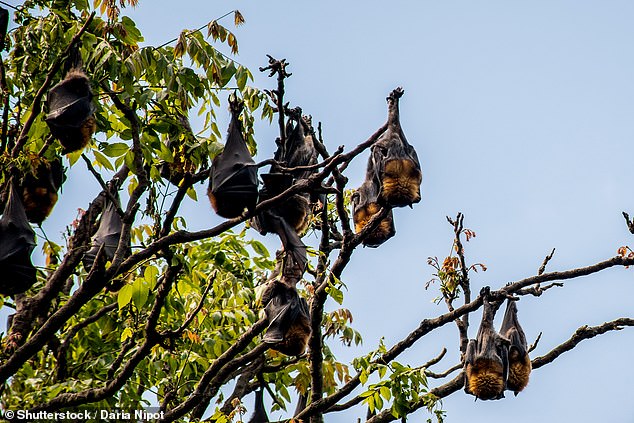Symptoms you have rare bat virus no-one has ever survived – as Aussie grandmother comes down with mystery infection
There are concerns that a rare bat virus has reemerged in Australia, with an Australian grandmother showing symptoms after being bitten by the animal while on a highway holiday.
Lyssavirus is a rare but deadly virus that can be transmitted to humans from an infected bat through bites or scratches, or through exposure to the animal’s saliva.
The virus often manifests early on in the form of flu-like symptoms, such as headache, fever and fatigue, before rapidly progressing to paralysis, delirium and convulsions – and usually death within a week or two.
Since the virus was first identified in 1996, only three cases of human infection with rabies virus and Australian Bat Lyssavirus (ABLV) have been recorded.

Sandi Galloway, from Geelong, was enjoying a trip to Cairns with her husband Gordon when she was attacked by the bat
All three cases occurred in Queensland and the virus currently has a 100 percent fatality rate in the country.
There is a wide variation in the time it takes for symptoms to appear after exposure to an infected animal, with previous cases ranging from a few days to several years.
Geelong grandmother Sandi Galloway was on holiday in Cairns when she was bitten on the head by a wild bat while walking back to her hotel room with her partner.
The bite left the 67-year-old feeling sore and her forehead has been itchy and bright red ever since.
“I felt it flying around my head,” she explained.
‘I thought it was trying to land on my hair. I swiped my hand to deter me, but the bloody thing bit me twice in the forehead.”


The bite left Mrs Galloway feeling sore and her forehead has been itchy and bright red ever since
“The next moment I felt a twinge, like two pinpricks on my forehead,” she said Cairns Post.
Ms Galloway said that apart from loss of appetite and tiredness, she did not think about the bite until the flight home.
“I didn’t want to look stupid going to a doctor about the bite because I thought this doesn’t happen in real life,” she said.
‘Then I told my daughter and she told me I could get rabies from it and die from it, so I made an appointment with my GP.’
Ms Galloway was later tested for the potentially fatal lyssavirus, showing symptoms including headache, fever and fatigue.
While she is still awaiting her results, the grandmother believes she likely has the virus due to her symptoms.
She received five injections on Wednesday and will need three more injections over the next three weeks.
Ms Galloway, who is partially blind, said initially she didn’t even realize it was a bat that had attacked her.
“I kept telling myself it was probably a spider because even though part of me knew, I didn’t want to believe a bat had bitten me,” she said.
She believes the bats should be moved outside the city center.
‘It’s ridiculous to have them in the middle of the city. “I think it’s horrible that this happened on holiday when I should have been enjoying myself, but instead stayed inside afterwards for fear it would happen again,” she said.
“It would be best for Cairns to remove the bats from the city and move them to an area that is not as busy.”


Only three people have contracted lyssavirus since 1996 – all from bat bites or scratches – and all three victims died
Cairns Regional Council has previously successfully relocated flying fox populations from busy CBD locations.
“The Council’s Flying Fox Colony Management General Policy outlines a multifaceted and balanced approach to flying fox management, using scientific advice and data to determine appropriate actions,” a council spokesperson said.
‘The policy means that the health and welfare of people should be prioritized over the health and welfare of flying foxes, if there is a conflict between the two.
‘This is a very rare but alarming incident. However, if the council is made aware of an important flying fox habitat that could cause conflict between people and the flying foxes, signage will be placed throughout the site to raise community awareness.”
